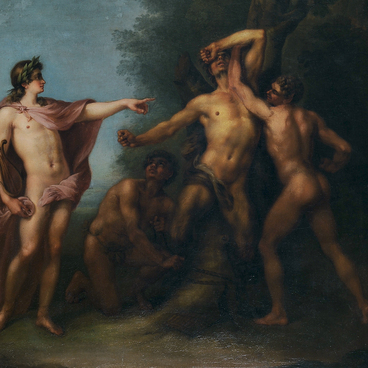The Three-Handed Madonna icon is revered across the Christian world for its healing properties. This is one of the most famous images. People pray to it to ask for babies and health. The origins of this iconographic type are no less miraculous.
The story of the icon’s ascension is closely associated with the name of St. John of DamAscus. He lived in 8th-century Syria, during the time of iconoclasm, and dedicated himself to saving icons from destruction. The Saint wrote three treatises in defense of worshiping icons and sent them to Emperor Leo III the IsAurian. However, the Emperor got enraged and decided to prevent John from writing his works. In order to carry out his plan, he forged a letter on behalf of John, in which the Saint allegedly offered the BYzantIne Emperor help in conquering the Syrian capital. John’s right hand was cut off as a punishment and hung up in the city square to intimidate the public. Later, the Saint got his hand back. He placed the cut-off extremity against the open wound and started to pray before the icon of Madonna. Upon waking up, he discovered that his hand had been miraculously restored. In gratitude for the healing, John attached an image of a silver hand to the lower part of the icon. Thus the image of the Three-Handed Madonna came into existence.
At the same time, Russian icons of this type have a peculiar feature, which can also be seen in the image from the collection of the Novosibirsk State Art Museum. The third hand is commonly depicted as being alive. It is as if it also belonged to the Mother of God, enhancing her image.
The images of the Mother of God and Jesus are very vivid. The master depicted nimbuses above the heads of the Saints, resembling royal headgear. Divine light fills all the space of the icon as if it was pouring out of it. The color of Madonna’s garment makes the artwork look more solemn. The colors symbolize eternal life and hope. The background also stands out. It consists of intertwining patterns, and one can recognize the elements of Christian symbolism.
The story of the icon’s ascension is closely associated with the name of St. John of DamAscus. He lived in 8th-century Syria, during the time of iconoclasm, and dedicated himself to saving icons from destruction. The Saint wrote three treatises in defense of worshiping icons and sent them to Emperor Leo III the IsAurian. However, the Emperor got enraged and decided to prevent John from writing his works. In order to carry out his plan, he forged a letter on behalf of John, in which the Saint allegedly offered the BYzantIne Emperor help in conquering the Syrian capital. John’s right hand was cut off as a punishment and hung up in the city square to intimidate the public. Later, the Saint got his hand back. He placed the cut-off extremity against the open wound and started to pray before the icon of Madonna. Upon waking up, he discovered that his hand had been miraculously restored. In gratitude for the healing, John attached an image of a silver hand to the lower part of the icon. Thus the image of the Three-Handed Madonna came into existence.
At the same time, Russian icons of this type have a peculiar feature, which can also be seen in the image from the collection of the Novosibirsk State Art Museum. The third hand is commonly depicted as being alive. It is as if it also belonged to the Mother of God, enhancing her image.
The images of the Mother of God and Jesus are very vivid. The master depicted nimbuses above the heads of the Saints, resembling royal headgear. Divine light fills all the space of the icon as if it was pouring out of it. The color of Madonna’s garment makes the artwork look more solemn. The colors symbolize eternal life and hope. The background also stands out. It consists of intertwining patterns, and one can recognize the elements of Christian symbolism.

